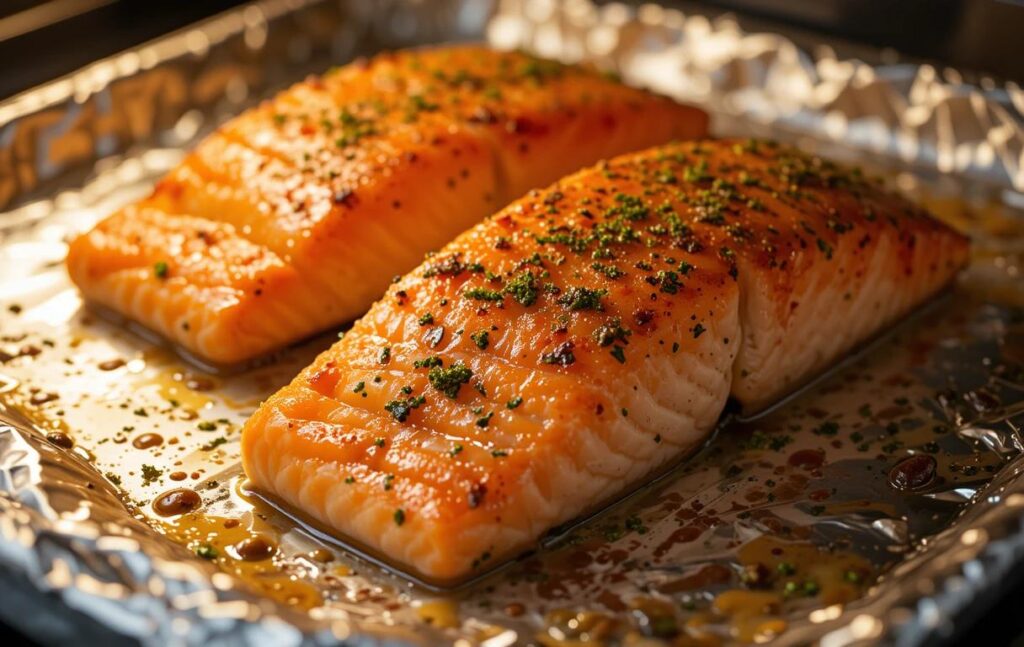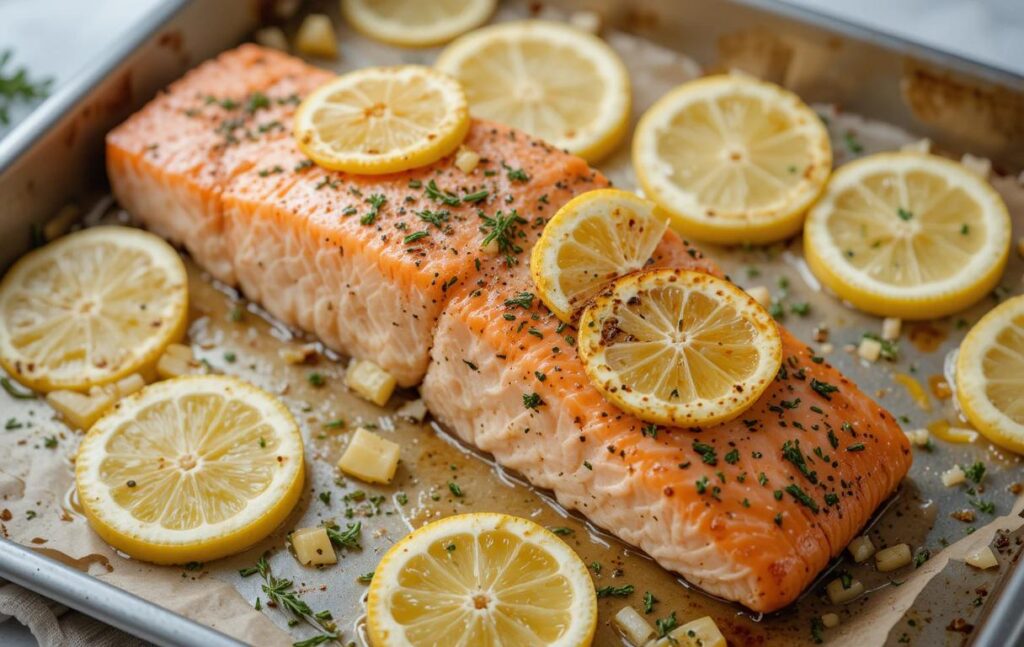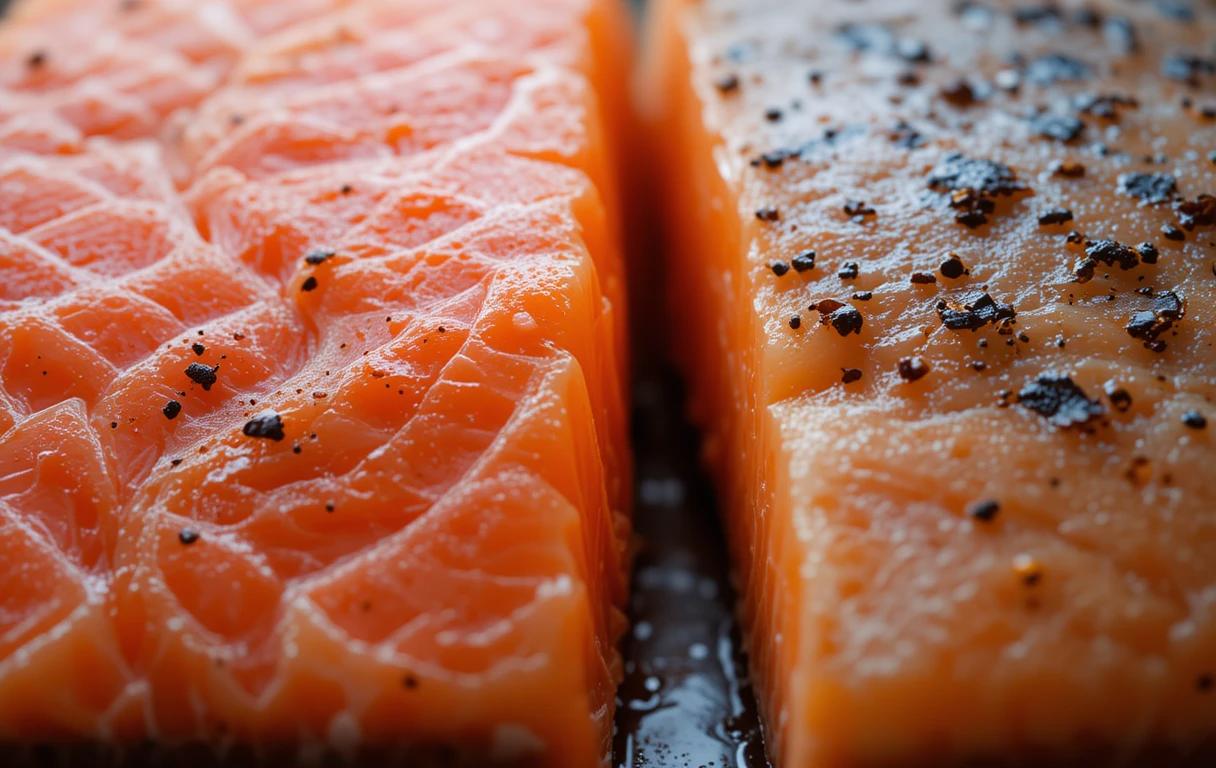How long does the salmon need to cook in the oven?
Cooking salmon in the oven is a foolproof way to achieve perfectly moist and flaky results. But the question that often arises is: how long does salmon need to cook in the oven? The answer depends on several factors, such as the thickness of the fish, the temperature of your oven, and whether your salmon is wild or farmed. In this guide, we’ll break down the science of baking salmon to perfection and share expert tips for consistently delicious results.
Why Oven-Baking Is the Best Way to Cook Salmon
Oven-baking is one of the most reliable methods for cooking salmon because it ensures even heat distribution and retains the fish’s natural juices. Unlike frying or grilling, baking allows for better control over temperature and cooking time, reducing the risk of overcooking. Plus, it’s a convenient method for cooking salmon alongside vegetables or other side dishes.
Factors That Affect Salmon Cooking Time
When baking salmon in the oven, several key factors determine how long it needs to cook. Understanding these variables ensures your salmon comes out perfectly cooked every time. Let’s dive into the specifics:
Thickness of the Salmon
The thickness of the salmon filet is one of the most critical factors in determining its cooking time. Unlike chicken or beef, salmon cooks relatively quickly, but thicker filets naturally take longer than thinner ones.
- Rule of Thumb: For every ½ inch of thickness, bake salmon for approximately 4–6 minutes at 375°F to 425°F.
- Thin, tail-end pieces may only need 10 minutes, while thicker cuts (like the center portion) could require up to 20 minutes.
Pro Tip: Always measure the thickest part of the filet when timing your cooking to avoid under- or overcooking.
Oven Temperature and Cooking Time
The oven temperature you select greatly impacts how long your salmon will need to bake. Below is a comparison of common temperatures and their respective cooking times:
- 350°F (Moderate Heat): 20–25 minutes for a medium-thick filet.
- 400°F (Standard Heat): 12–15 minutes for a medium-thick filet.
- 425°F (High Heat): 8–12 minutes for a medium-thick filet, resulting in a crispy exterior.
Pro Tip: For beginners, 400°F is a safe middle ground that balances cooking speed and retaining moisture.
Wild vs. Farmed Salmon
The type of salmon—wild or farmed—also influences cooking time. Here’s why:
- Wild Salmon: Typically leaner, meaning it cooks faster and is more prone to drying out. It’s best to cook wild salmon at a lower temperature (e.g., 350°F) for a slightly longer time.
- Farmed Salmon: Higher fat content makes it more forgiving and allows for shorter cooking times at higher temperatures.
Pro Tip: Check your filet’s label to know whether it’s wild or farmed and adjust your timing accordingly.
Desired Doneness Level
While the FDA recommends cooking salmon to an internal temperature of 145°F, many chefs prefer slightly lower temperatures for a juicier texture:
- Medium-Rare: 125°F to 130°F, flaky yet moist.
- Medium: 135°F to 140°F, firm with slight moisture.
- Well-Done: 145°F and above, very firm and fully cooked.
Pro Tip: Use a meat thermometer to check doneness, and remove the salmon from the oven a few degrees before your target temperature, as it will continue to cook slightly from residual heat.
Ideal Internal Temperature for Salmon
Achieving the perfect internal temperature is key to a delicious baked salmon. Overcooking can dry out the fish, while undercooking can leave it unpleasantly raw in the middle. Here’s a guide to ensure your salmon is just right:
Recommended Internal Temperature
- FDA Guidelines: The Food and Drug Administration recommends cooking salmon to an internal temperature of 145°F for safety. This ensures the fish is fully cooked and safe to eat.
- Chef’s Preference: Many chefs suggest removing salmon from the oven at 125°F–130°F for a medium-rare result. The residual heat will continue to cook the salmon to perfection.
Pro Tip: Always use an instant-read meat thermometer to check the thickest part of the filet. Insert the thermometer at a slight angle for an accurate reading.
How to Avoid Overcooking
To avoid overcooking, follow these tips:
- Remove salmon from the oven when it’s slightly under your desired temperature.
- Allow the salmon to rest for 2–3 minutes after baking. This resting period ensures even distribution of juices and continued cooking from residual heat.
- Avoid baking at overly high temperatures unless you’re experienced in timing.
Step-by-Step Guide to Baking Salmon in the Oven

Master the art of baking salmon with this simple step-by-step guide.
1: Preheat the Oven
- Preheat your oven to your desired temperature (350°F, 400°F, or 425°F).
- While the oven heats, prepare your salmon for baking.
Pro Tip: Preheating ensures the fish cooks evenly from start to finish.
2: Prepare the Salmon
- Line a baking sheet with parchment paper or aluminum foil for easy cleanup.
- Pat the salmon dry with a paper towel to remove excess moisture. This helps achieve a better texture.
3: Season Generously
- Drizzle the salmon with olive oil and season with salt, pepper, and your favorite herbs (dill, parsley, or paprika). Add optional toppings like lemon slices, garlic butter, or vegetables for extra flavor.
Pro Tip: Keep seasonings simple to let the salmon’s natural flavor shine.
4: Bake the Salmon
- Place the prepared salmon in the oven and bake based on thickness and temperature:
- Thin filets: 10–12 minutes at 400°F.
- Thick filets: 15–20 minutes at 375°F–400°F.
- Use a timer to avoid overcooking.
5: Check for Doneness
- After baking, check the salmon’s internal temperature with a meat thermometer.
- Look for visual cues:
- Salmon should be opaque and flaky when tested with a fork.
6: Serve and Enjoy
- Transfer the baked salmon to a serving dish.
- Pair with sides like roasted vegetables, rice, or a fresh salad for a complete meal.
Common Mistakes to Avoid When Baking Salmon
Baking salmon is straightforward, but a few common pitfalls can lead to subpar results. Avoid these mistakes to ensure perfectly cooked fish every time.
Overcooking the Salmon
Overcooking is the most common mistake and results in dry, tough salmon. To avoid this:
- Use a meat thermometer to track the internal temperature.
- Remove the salmon from the oven a few degrees below your target, allowing residual heat to finish the job.
Using the Wrong Temperature
Baking salmon at either too low or too high a temperature can affect texture:
- Too low (e.g., under 300°F): Leads to uneven cooking and a lackluster texture.
- Too high (e.g., above 450°F): Risks drying out the fish before the inside is cooked.
Stick to a range of 350°F to 425°F for best results.
Forgetting to Preheat the Oven
Skipping the preheating step can result in uneven cooking. A cold oven will cause the salmon to cook slower, which may lead to dryness.
Neglecting to Season Properly
While salmon has a naturally rich flavor, proper seasoning enhances its taste:
- Don’t skimp on salt, pepper, and other seasonings.
- Add citrus (like lemon) or herbs for a complementary flavor boost.
Not Checking for Doneness
Many people rely on timing alone, which can lead to under- or overcooking. Instead:
- Use a thermometer or visual cues to ensure the salmon is cooked to perfection.
How to Check If Your Salmon Is Done
Knowing how to check for doneness is crucial for perfectly baked salmon. Here are three methods to determine if your fish is ready:
Use a Meat Thermometer
- Insert a meat thermometer into the thickest part of the salmon.
- Look for an internal temperature between:
- 125°F–130°F for medium-rare
- 135°F–145°F for well-done
Pro Tip: If you don’t own a thermometer, now’s a good time to invest in one for foolproof results.
Visual Cues
- Fully cooked salmon has an opaque appearance. Raw salmon will still appear translucent.
- Gently press the fish with a fork or your finger; it should flake easily and feel firm but not hard.
Tactile Test
- Press the thickest part of the salmon with a fork:
- Under-cooked: Spongy and springy texture.
- Perfectly Cooked: Firm yet soft, with slight flakiness.
- Overcooked: Hard and dry to the touch.
FAQ About Baking Salmon in the Oven

Let’s address some of the most common questions about baking salmon to help you achieve consistently delicious results.
How Long Should I Bake Salmon at 350°F?
At 350°F, salmon typically takes 20–25 minutes for a medium-thick filet. Keep in mind:
- Thin cuts may only need 15–20 minutes.
- Check for doneness using a thermometer or by observing the flaky texture.
Can I Bake Frozen Salmon Without Thawing?
Yes, you can bake frozen salmon directly without thawing, though it requires adjustments:
- Increase the cooking time by 50%. For example, if a thawed filet takes 15 minutes, frozen salmon will take around 22–25 minutes.
- Cover the salmon with foil for the first half of cooking to retain moisture.
Pro Tip: If time allows, thaw frozen salmon in the refrigerator overnight for better seasoning absorption.
Should I Cover Salmon While Baking?
Covering salmon with foil can help retain moisture, especially at higher temperatures. It’s particularly useful for:
- Thin or delicate filets.
- Cooking at 400°F or higher to prevent drying out.
Uncovered salmon, however, allows for a crispier texture, especially if brushed with oil or butter.
Is It Necessary to Use Parchment Paper or Foil?
While not essential, using parchment paper or foil has its benefits:
- Easier cleanup.
- Prevents sticking.
- Helps retain juices for moist, flavorful salmon.
Pro Tip: Use parchment for healthier cooking and foil for a slightly steamed effect.
Can I Add Vegetables to the Same Pan?
Yes, salmon pairs beautifully with vegetables like asparagus, zucchini, and cherry tomatoes. Just ensure:
- Vegetables are cut into similar sizes for even cooking.
- Toss vegetables in olive oil and season before adding them to the pan.
Why Is My Salmon Always Dry?
Dry salmon is usually the result of overcooking. Avoid this by:
- Baking at 350°F–400°F for the appropriate time.
- Checking the internal temperature with a meat thermometer.
- Resting the salmon for 2–3 minutes after removing it from the oven.
Benefits of Eating Salmon
Salmon is more than just a delicious fish; it’s a powerhouse of nutrition. Here are some of the top benefits of including salmon in your diet:
Rich in Omega-3 Fatty Acids
Salmon is one of the best natural sources of omega-3 fatty acids, which:
- Promote heart health.
- Reduce inflammation.
- Support brain function and mental health.
High-Quality Protein Source
A single serving of salmon provides about 22 grams of protein, making it an excellent choice for:
- Muscle repair and growth.
- Sustaining energy levels.
- Keeping you full longer.
Packed with Essential Nutrients
Salmon is loaded with essential vitamins and minerals, such as:
- Vitamin D: Supports bone health and immune function.
- Vitamin B12: Boosts energy and aids in nerve function.
- Selenium: Protects against oxidative stress.
Supports Skin and Hair Health
The healthy fats in salmon contribute to glowing skin and stronger hair. Omega-3s help:
- Keep skin hydrated.
- Reduce acne and inflammation.
- Improve hair shine and strength.
Conclusion: Timing Is Key to Perfect Salmon
Baking salmon in the oven is a simple yet rewarding way to prepare this nutritious fish, but timing is everything. To summarize:
- Always consider factors like thickness, oven temperature, and salmon type (wild or farmed).
- Use a meat thermometer to achieve your desired doneness without overcooking.
- Experiment with seasonings and sides to make each meal unique.
Whether you’re aiming for a quick weekday dinner or an elegant main course for guests, mastering the art of baking salmon guarantees a moist, flaky, and flavorful dish every time.
Call to Action: Share Your Perfect Salmon Recipe!
Now that you know how long salmon needs to cook in the oven and the tips for getting it just right, it’s your turn! Share your salmon recipes or try this method and let us know how it turned out. Whether it’s a classic lemon-dill seasoning or a creative marinade, we’d love to hear your favorite ways to bake salmon.
Don’t forget to:
- Share your pictures on social media using the hashtag #PerfectSalmon.
- Comment below with your tips or variations.
Recipe: 8 Easy Ways to Cook Salmon
Related Recipes
- “Tuna Tomato Sauce Pasta Recipe“: A tomato-based recipe showcasing another way to use tomatoes.
- “Baked Chicken Fettuccine Alfredo with Broccoli“: Another comforting dish that can be complemented with tomato-based sauces.
Ingredient-Focused Content
- “Lions Mane Mushroom Recipe“: Suggest using a tomato gravy as a flavorful addition for plant-based dishes.
Cooking Techniques and Enhancements
- “Mango Habanero Salsa“: Explore complementary uses of sauces and gravies for flavor diversity.
Storage and Reuse Tips
- “Sous Vide Recipes“: Recommend tomato gravy as a sauce for sous vide-cooked meats or vegetables.
- “Ocean Spray Cranberry Sauce Recipe“: Guide readers on making and storing sauces, including tomato gravy.

